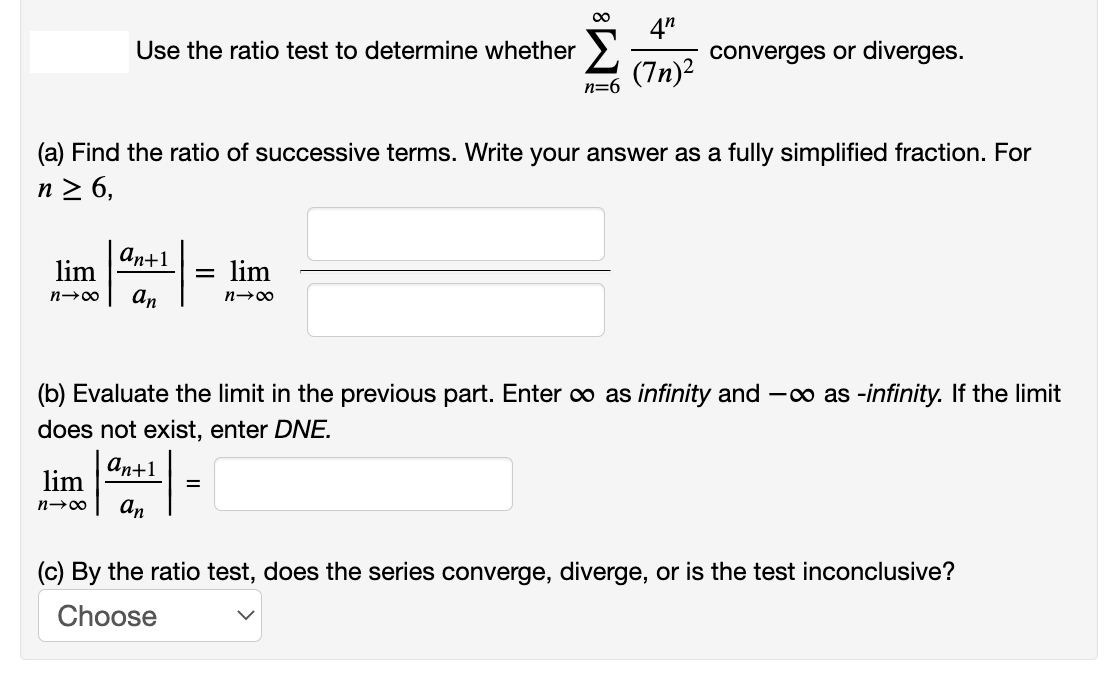4" converges or diverges. (7n)2 Use the ratio test to determine whether n=6 (a) Find the ratio of successive terms. Write your answer as a fully simplified fraction. For n > 6, an+1 lim lim n→00 an (b) Evaluate the limit in the previous part. Enter o as infinity and -o as -infinity. If the limit does not exist, enter DNE. аn+1 lim an (c) By the ratio test, does the series converge, diverge, or is the test inconclusive? Choose
4" converges or diverges. (7n)2 Use the ratio test to determine whether n=6 (a) Find the ratio of successive terms. Write your answer as a fully simplified fraction. For n > 6, an+1 lim lim n→00 an (b) Evaluate the limit in the previous part. Enter o as infinity and -o as -infinity. If the limit does not exist, enter DNE. аn+1 lim an (c) By the ratio test, does the series converge, diverge, or is the test inconclusive? Choose
Algebra & Trigonometry with Analytic Geometry
13th Edition
ISBN:9781133382119
Author:Swokowski
Publisher:Swokowski
Chapter10: Sequences, Series, And Probability
Section: Chapter Questions
Problem 63RE
Related questions
Question

Transcribed Image Text:4"
converges or diverges.
(7n)2
Use the ratio test to determine whether
n=6
(a) Find the ratio of successive terms. Write your answer as a fully simplified fraction. For
n > 6,
an+1
lim
lim
n→00
an
(b) Evaluate the limit in the previous part. Enter o as infinity and -o as -infinity. If the limit
does not exist, enter DNE.
аn+1
lim
an
(c) By the ratio test, does the series converge, diverge, or is the test inconclusive?
Choose
Expert Solution
This question has been solved!
Explore an expertly crafted, step-by-step solution for a thorough understanding of key concepts.
Step by step
Solved in 3 steps with 3 images

Recommended textbooks for you

Algebra & Trigonometry with Analytic Geometry
Algebra
ISBN:
9781133382119
Author:
Swokowski
Publisher:
Cengage

Algebra & Trigonometry with Analytic Geometry
Algebra
ISBN:
9781133382119
Author:
Swokowski
Publisher:
Cengage